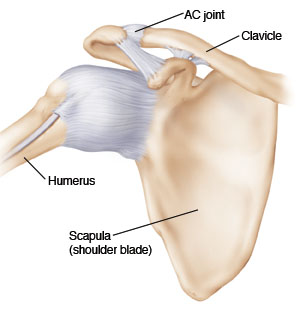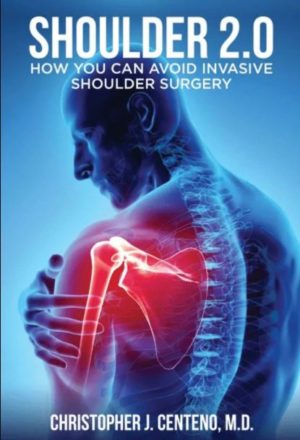At the Centeno-Schultz Clinic, we understand the complexities of the human body and appreciate how structures are interrelated. We reject the piecemeal approach commonly employed by orthopedic surgeons and pain-management specialists and embrace the body as a whole when evaluating and treating patients. Such is the case with the AC joint and the areas connected to it.
Neck pain is very common and can be debilitating, leading to loss of function, isolation, depression, and addiction to narcotics. Not all neck pain arises from the neck however. AC joint instability or injury can cause or aggravate your ongoing neck pain.
What Is the AC Joint?
The acromioclavicular (AC) joint is one of the four joints in the shoulder. If you follow your collarbone (the clavicle) out toward the top of your shoulder, you will feel a bump (prominence) in the bone just prior to reaching the shoulder. This is the AC joint. It is the junction of two bones: the clavicle and the acromion.
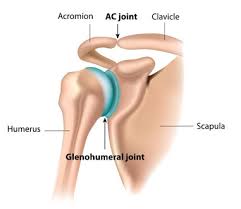
The acromion is a bony process on the shoulder blade (scapula).
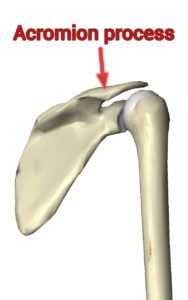
The image above is a posterior view of the scapula and acromion.
Function
It attaches the scapula to the clavicle and serves as the main articulation that suspends the upper extremity from the trunk.
At the Centeno Schultz Clinic, stability is key. Please see our SANS approach regarding stability.
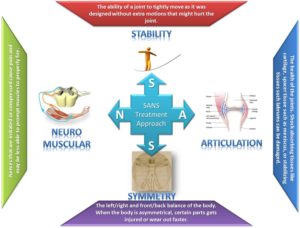
Its stability is dependent upon the following three ligaments:
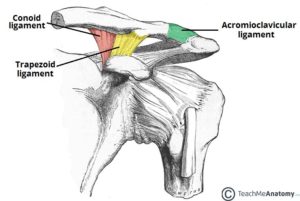
- The AC ligament (shown in green) covers the superior portion of the joint.
- The coracoclavicular ligament consists of two separate ligaments: the conoid (shown in red) and trapezoid (shown in yellow).
- The coracoacromial ligament connects the coracoid and the acromion.
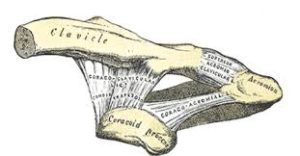
Injury to the AC Joint
An injury to the AC joint can occur as a direct blow to the shoulder, which is common is contact sports, such as football and hockey. It can also occur when slipping and falling onto the shoulder or riding a bike too aggressively and going over the handlebars.
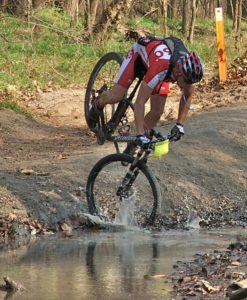
An AC injury commonly involves straining or tearing supporting ligaments, which can lead to AC joint separation.
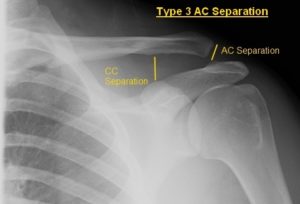
The clavicle is the site of attachment of many muscles that act on the upper extremity and neck, which include the following muscles:
Sternocleidomastoid Muscle
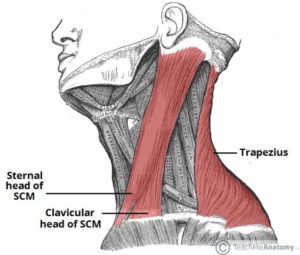
Deltoid Muscle

Trapezius Muscle

Instability or injury to the AC joint can cause irritation and dysfunction to any or all of these muscles, resulting in neck pain. Hence, not all neck pain arises directly from the neck.

If you suffer from ongoing neck pain and have only been afforded piecemeal treatment plans, such a cervical facet injection or radiofrequency ablations, consider having an evaluation at the Centeno-Schultz Clinic, where you will have an evaluation completed by board-certified, fellowship-trained physicians who are comprehensive and look beyond your neck for causes of ongoing neck pain.
